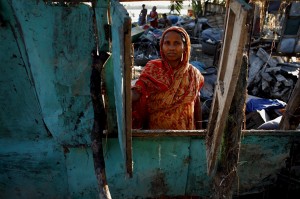Bangladesh at a glance
Prepared for New Disasters?
Given Bangladesh’s exposure and vulnerability to numerous natural hazards, the state and the international community have invested time and resources in disaster preparedness and response programmes. Cyclone Sidr, which struck on 15 November 2007 and killed over 1,000 people, illustrated the strengths and weakness of these programmes.
Because of existing national capacity, strong relationships with donors and the presence of a large number of humanitarian actors, no UN Appeal was launched. Nevertheless, overall funding was high – including significant funds from non-traditional donors – and implementation and coordination were on the whole timely and effective, largely due to previous preparation. However, unearmarked and long-term funds were limited.
With the government playing the lead role in the response, international humanitarian mechanisms and standards – such as the cluster system – had to be adapted to the local context, not without some difficulty. The disaster also revealed the limitations of the existing preparedness and response systems, in particular in coping with multiple disasters, and an alarming lack of comprehensive contingency planning. Overall, while many of the Good Humanitarian Donorship (GHD) Principles were applied, this was predominately due to previous experience and good practice, not an awareness of the GHD initiative.

Share this